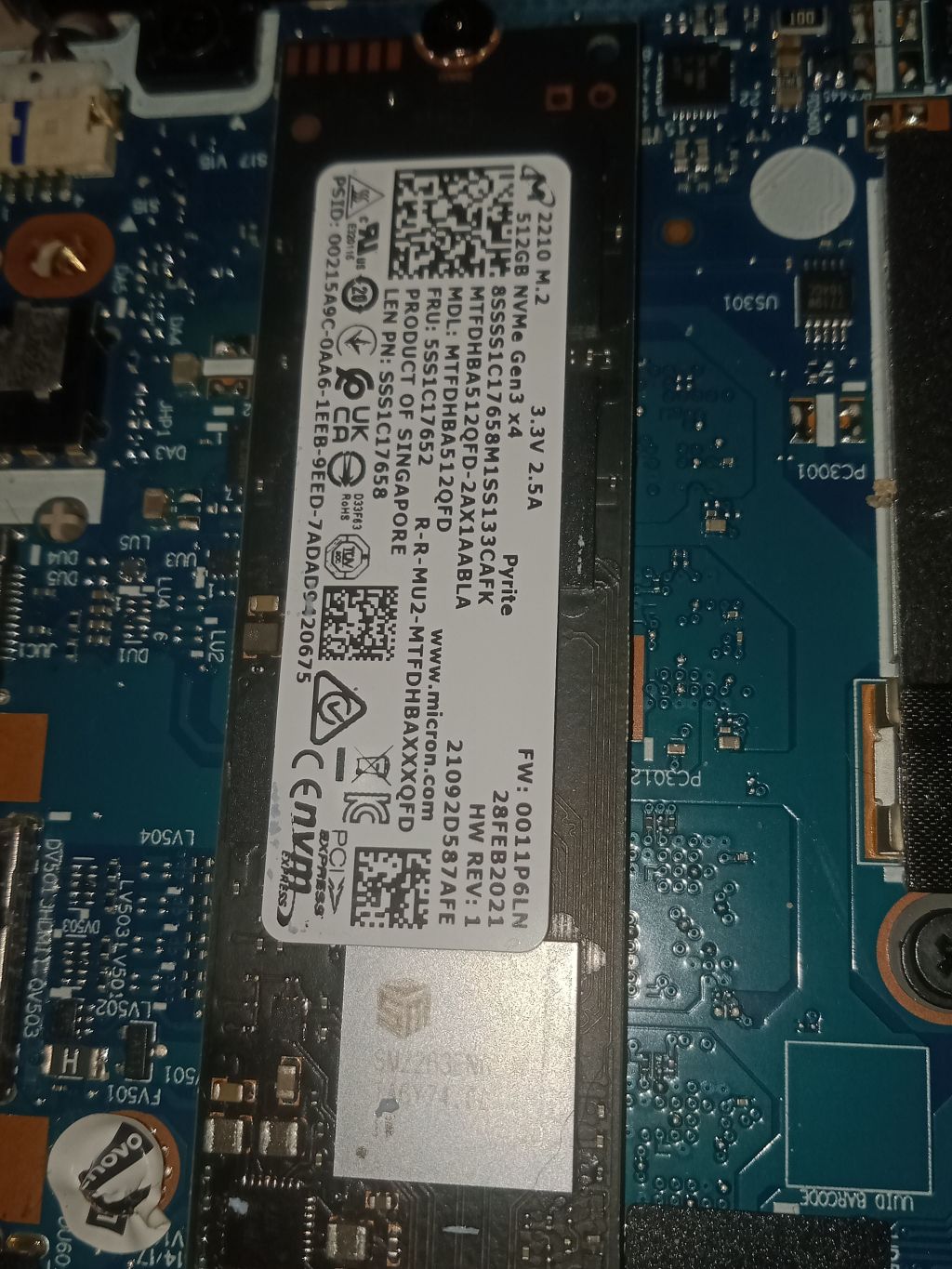Comparing: Micron 2210 MTFDHBA512QFD vs OPPO A15s eMMC 5.1
In this comparison, we analyze two Disks: Micron 2210 MTFDHBA512QFD and OPPO A15s eMMC 5.1, using synthetic benchmark tests to evaluate their overall performance. This side-by-side comparison helps users understand which hardware delivers better value, speed, and efficiency based on standardized testing. Whether you're building a new system or upgrading an existing one, this benchmark-driven evaluation offers valuable insights to guide your decision.

Micron 2210 MTFDHBA512QFD
| Type: | Disks |
|---|---|
| Model: | Micron MTFDHBA512QFD |
| Capacity: | 512GB |
| Interface: | PCIe 3.0 x4 |

OPPO A15s eMMC 5.1
| Type: | Disks |
|---|---|
| Model: | OPPO A15s eMMC 5.1 |
| Capacity: | 64GB |
| Interface: | eMMC |
Specification Comparison Table
This specification comparison presents technical details of several devices or components to help you understand the key differences between each option. Use this table as a reference to determine which device best suits your needs.
| Specification | Micron 2210 MTFDHBA512QFD | OPPO A15s eMMC 5.1 |
|---|---|---|
| Brand | Micron | - |
| Format | SSD M.2 NVMe 2280 | eMMC 5.1 |
| Capacity | 512GB | 64GB |
| Interface | PCIe 3.0 x4 | eMMC |
Submission Comparison Table
This submission comparison table displays the number and details of benchmark data submissions from various devices or components. This information helps you understand the performance based on the benchmarks that have been tested, as well as providing an overview of the consistency and popularity of the available benchmark results.
Submission Comparison Chart
This chart visualizes the benchmark scores comparison between two hardware devices based on submitted data.
Media Gallery
A collection of photos of tested hardware. These images can help you identify the physical form, model, and variant of the hardware in question. These photos are from our own documentation, and if they are not available we may not be able to document them.
About Hardware Micron 2210 MTFDHBA512QFD
The Micron 2210 MTFDHBA512QFD is a 512GB capacity NVMe SSD that uses the PCIe Gen 3.0 x4 interface and utilizes QLC NAND flash, designed to provide the ideal combination of large capacity and affordability compared to TLC-based SSDs. One of the key components of this SSD's performance is the use of the Silicon Motion SM2263ENG controller, which is known for efficiently managing the high performance and low power consumption of QLC-based NVMe SSDs.
With this controller, the Micron 2210 is able to maximize the potential of QLC NAND while maintaining operational stability and efficiency. In tests using CrystalDiskMark, the SSD recorded speeds of up to 2242.12 MB/s read and 1148.16 MB/s write, while in AS-SSD Benchmark, the results were 1891.69 MB/s read and 629.64 MB/s write. This performance is perfectly sufficient for multitasking, fast system booting, and large file processing.
Testing was conducted on a Lenovo IdeaPad Slim 3i 14ITL6 device, with a 12GB DDR4 3200MHz Dual Channel (8+4) RAM configuration and running Windows 10 and Windows 11 22H2 operating systems. These test platforms are representative of modern systems that are compatible with the high performance these SSDs offer.
With its M.2 2280 form factor and support for technologies such as TRIM, S.M.A.R.T. and LDPC ECC, the Micron 2210 512GB is suitable for laptop and desktop users who want fast and efficient storage with sufficient endurance for daily workloads and light-medium productivity.
Device Test:
Device: Lenovo IdeaPad Slim 3i 14ITL6
RAM: 12GB DDR4 3200MHz Dual Channel (8+4)
OS: Windows 10, Windows 11 22H2
Friday, 06 August 2021 04:34:19 | Update: 1 month ago
About Hardware OPPO A15s eMMC 5.1
OPPO A15s eMMC 5.1 is the eMMC (embedded MultiMediaCard) version 5.1-based internal storage chip used in the OPPO A15s smartphone. The eMMC 5.1 technology is a significant upgrade from the previous generation, delivering faster read/write speeds, better power efficiency, and improved performance in data input/output management. While not as fast as the more modern UFS (Universal Flash Storage) technology, eMMC 5.1 remains a reliable storage standard for entry-level to mid-range smartphones.
This storage is designed to provide a seamless user experience, from opening apps, saving files, recording videos, to managing Android system data. It also plays an important role in operating system stability, lightweight multitasking, and response time when the device starts up or switches between apps.
The tests were conducted on an OPPO A15s device with MediaTek Helio P35 (MT6765) specifications, 4GB RAM, and 64GB internal storage, running on Android 10 operating system with ColorOS 7.2 interface. The test was conducted when the device had been in use for approximately two years, so the performance results may be slightly affected by NAND Flash performance degradation over time (wear leveling).
In a benchmark using the Cross Platform Disk Test (Mobile), the eMMC 5.1 on the OPPO A15s recorded a read speed of 145.27 MB/s and a write speed of 50.09 MB/s. This indicates that the storage performance is still solid enough for daily needs such as opening social media, streaming videos, accessing galleries, and saving files from third-party applications.
Overall, the eMMC 5.1 on the OPPO A15s is a well-balanced internal storage solution between price, efficiency, and performance, perfect for users who need a smartphone with responsive capabilities while remaining power efficient. For casual users, this performance is more than enough to run most popular Android apps without a hitch.
Device test (testbed):
Device: OPPO A15s
CPU: MediaTek MT6765 Helio P35
RAM: 4GB
Storage: 64GB
OS: Android 10, ColorOS 7.2
* This hardware test was conducted after the device was approximately 2 years old, there may be some performance degradation.
Tuesday, 06 April 2021 13:51:49 | Update: 1 month ago

